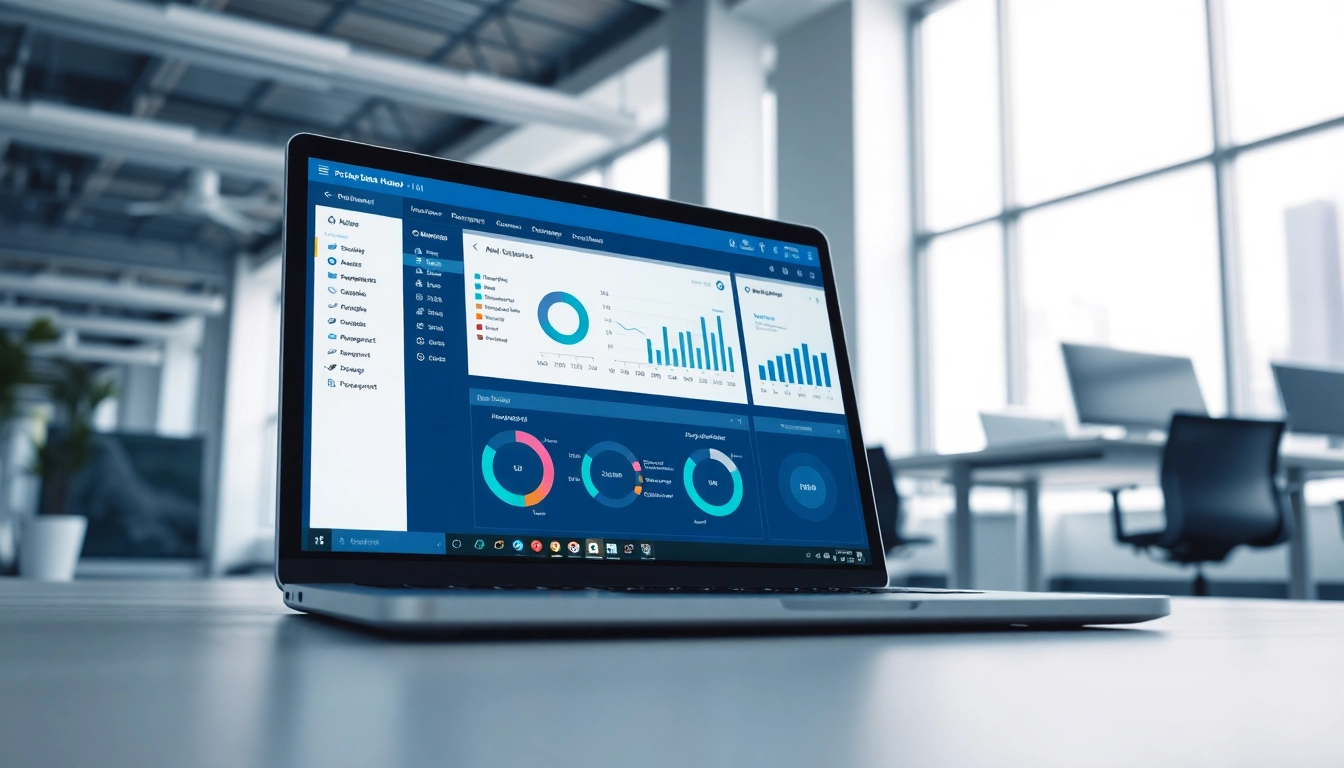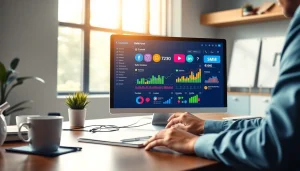Effective Strategies for Hosting Productive Meetings
Understanding the Importance of Meetings
Meetings serve a fundamental function in the organizational world, building connections, fostering collaboration, and driving results. An effective meeting can create clarity on objectives, align teams towards common goals, and nurture relationships. As noted in a meeting context, successful discussions can have profound impacts on project outcomes and team dynamics. This article delves into the significance of meetings, how to prepare, conduct, and follow up on them effectively, ensuring they yield desired results.
Defining What Constitutes a Meeting
A meeting is generally understood as an assembly of individuals, often convened to discuss topics of common interest or relevance to a shared purpose. In both formal and informal settings, meetings can vary extensively in their structure, duration, and outcomes. According to the definition provided by the Cambridge English Dictionary, meetings can occur in person or online, indicating that the digital transformation has redefined traditional practices.
Understanding the core elements that make up a meeting includes recognizing its intent, which could be informative, decision-making, brainstorming, or evaluative in nature. Each meeting type requires different approaches and outcomes, making the clarity of purpose paramount.
Types of Meetings: In-person vs. Virtual
With the advent of technology, meetings can now take place in-person or virtually, each having its unique advantages and challenges. In-person meetings have the tangible benefit of fostering personal connections and rapport among participants, allowing for clearer communication through non-verbal cues.
On the other hand, virtual meetings have gained immense popularity due to their convenience; they break geographical barriers and allow for a diverse range of participants. Platforms like Zoom and Google Meet have revolutionized the way teams collaborate remotely. However, they also present challenges such as technical issues, lack of personal interaction, and potential distractions in home environments.
Benefits of Efficient Meeting Practices
Efficient meeting practices can lead to numerous benefits, including enhanced productivity, better time management, and higher job satisfaction among team members. Structured agendas help participants stay focused, ensuring that all key points are addressed while preventing unnecessary digressions.
Furthermore, by cultivating an environment where open communication is encouraged, meetings facilitate innovation and collaborative problem-solving. This aspect not only helps in achieving immediate objectives but also contributes to fostering a healthy organizational culture.
Preparing for a Successful Meeting
Preparation is a critical phase that directly influences the success of any meeting. Without proper groundwork, even the best-intentioned meetings can devolve into disorganization and confusion.
Setting Clear Objectives and Agendas
One of the first steps in preparing for a successful meeting is defining clear objectives. What is the purpose of the meeting? What outcomes are expected? A well-defined agenda allows participants to know what to expect and arrive ready to engage in meaningful discussions.
Effective agendas typically outline the main topics to be discussed, the time allocated for each item, and the person responsible for leading each segment. This level of clarity can improve focus and drive accountability during the meeting.
Inviting the Right Participants
Choosing the right participants is essential. Inviting too many people can lead to decision paralysis and disengagement, while having too few can hinder diverse perspectives and insights. A good practice is to assess who is directly affected by the meeting’s agenda and who can contribute meaningfully to the discussions.
Additionally, considering the time zones of remote participants when scheduling meetings is crucial to ensure maximum attendance and engagement.
Choosing the Ideal Meeting Format
The format of the meeting—whether it’s a brainstorming session, a status update, or a decision-making event—will influence how you structure the agenda and conduct the meeting. For instance, brainstorming sessions benefit from a more open and free-flowing format, whereas decision-making meetings require more structure to guide towards actionable conclusions.
Advances in technology allow for hybrid formats, where some participants join virtually while others attend in person. Ensuring that technology is tested and functional ahead of time can mitigate issues during the meeting.
Conducting the Meeting Effectively
Once a meeting is underway, the manner in which it is conducted plays an essential role in achieving the desired outcomes. Effective facilitation, participant engagement, and focus are key to a productive meeting.
Best Practices for Facilitation
A skilled facilitator is key to a successful meeting. They should manage the flow of discussion, encourage participation from all attendees, and ensure that the meeting stays on topic. Setting ground rules at the beginning, such as not interrupting and respecting differing opinions, creates a respectful environment conducive to collaboration.
Facilitators should also summarize key points throughout the meeting, ensuring clarity and preventing misunderstandings. This practice reinforces information retention and helps in tracking the progression of discussions.
Encouraging Participation and Engagement
Engaging participants is vital for fruitful discussions. This can be achieved by asking open-ended questions and inviting opinions from quieter members. The use of interactive tools like polls can also heighten involvement and collect real-time feedback.
Additionally, creating breakout groups in virtual meetings can allow for smaller discussions, encouraging even those who are typically reticent to contribute their thoughts.
Keeping Discussions Focused and On Track
Keeping discussions on track is one of the challenges of any meeting. The facilitator should be vigilant in steering conversations back to the agenda whenever they tend to diverge into unrelated topics. If a discussion appears to linger too long, a good approach is to table the discussion for a follow-up meeting, allowing time to explore other critical items on the agenda.
Post-Meeting Actions
The completion of a meeting does not signal the end of its impact. Performing structured follow-up actions is necessary to solidify and leverage the discussions held.
Documenting Meeting Outcomes
One of the most critical post-meeting actions is documenting outcomes. Meeting minutes should capture key points discussed, decisions made, and any important issues raised. This documentation serves as a reference point for attendees and provides clarity on agreed-upon next steps.
Utilizing a consistent format for minutes can streamline future references and enhance clarity. Including a timeline for deliverables can also cultivate accountability among participants.
Assigning Action Items and Follow-Ups
Assigning action items helps translate discussions into concrete results. Clearly articulating who is responsible for each action ensures accountability. For each task, deadlines should be set to maintain momentum and urgency.
Follow-up meetings or check-ins can be scheduled to assess the progress of these action items, fostering a culture of accountability and continuous improvement.
Soliciting Feedback for Improvement
Soliciting feedback from meeting participants can provide valuable insights into how future meetings can be improved. Surveys or informal conversations can help gauge what worked well and what could be enhanced, such as meeting length, structure, and engagement levels.
This feedback loop not only aids in optimizing future meetings but also demonstrates to participants that their opinions are valued, fostering a more inclusive atmosphere.
Measuring Meeting Success
Understanding how to measure the success of a meeting is essential to improving future outcomes. By setting defined performance indicators and evaluating them, organizations can continually refine their meeting strategies.
Key Performance Indicators for Meetings
KPIs for meetings may include participant engagement rates, the achievement of stated objectives, and overall satisfaction scores. Tracking these indicators allows facilitators to assess both the qualitative and quantitative success of meetings.
For instance, using post-meeting surveys can provide insights into whether participants felt the meeting was worthwhile. Gathering data on attendance rates can help determine if participants feel its relevance matches their priorities.
Tools for Evaluating Effectiveness
Various tools are available for evaluating meeting effectiveness, from survey platforms like SurveyMonkey or Google Forms to project management software that tracks meeting-related actions. Collecting and analyzing such data can reveal trends over time, helping teams identify what strategies resonate well with their workforce.
By implementing metrics that link back to organizational goals, it’s easier to understand how meetings contribute to broader objectives, giving a clear picture of their importance.
Improving Future Meetings Based on Feedback
The ultimate goal of measuring and evaluating meeting success is to enhance future practices. Utilizing gathered insights to implement changes—in terms of format, participation guidelines, or even technology used—can lead to continuous improvement.
Engaging participants in the process of improvement not only builds morale but enriches the quality of discussion. Regularly reviewing meeting structures can help organizations adapt to the evolving needs of their workforce and projects.














Post Comment